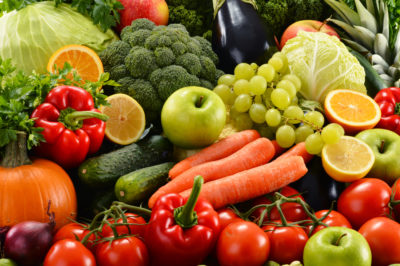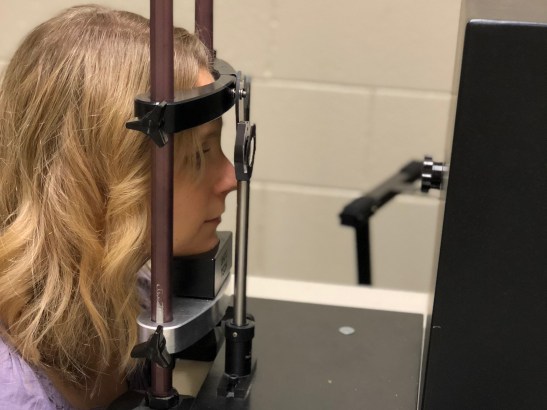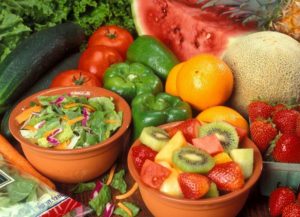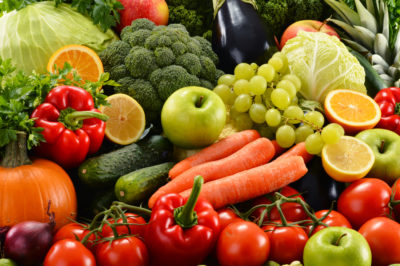Carotenoids are plant pigments. They make tomatoes red and give carrots their distinctive orange hue. You see them when leaves change colors in the fall. But carotenoids are not just decorative.
Among the roughly 600 carotenoids in nature, two in particular, lutein and zeaxanthin, have been found to improve the function of the human brain, according to researchers at the University of Georgia.
”Carotenoids, in general, when we eat them, they are antioxidants, so they do a great job of keeping our bodies healthy and free of oxygenated damage,” says Lisa Renzi-Hammond, one of the researchers looking at the effect of lutein and zeaxanthin.

“They are anti-inflammatories, so we see that the more of these molecules we eat, the less inflammation we tend to have,’’ she says. “Our research shows that they are also changing, in many ways, the structure of the brain, and making it a more efficient organ.”
Lutein is a lipid, fat-based anti-oxidant that the brain uses to prevent the oxidation of the fat in the brain, says Billy Hammond, who is Renzi-Hammond’s research partner and husband. “It basically kind of links neurons together so they act more efficiently, so it helps cognition and a number of other processing things that the brain does.”

In an experiment, Hammond and Renzi-Hammond looked at increased lutein intake in both older adults and people of college age. The study populations were given lutein and zeaxanthin supplements for a year to see how this changed their cognition. The groups taking the supplements were compared to groups taking a placebo.
“We found that by improving basic functions, like helping the brain process faster, that all of the cognitive functions were improved as well, so they had better memory, better problem-solving, compared to a placebo,” says Hammond, “The [patients with] placebos didn’t improve, but the subjects that were supplemented with lutein and zeaxanthin did.”
The researchers found improvement in the older adults in the study, something they had expected. Older individuals have a wide range of cognitive functional abilities because of natural, age-related changes in the brain.

But the big surprise was the cognitive benefit seen in the college students. “Adding lutein in supplemental form to the diets of our younger adults really improved them,’’ Renzi-Hammond says.
The result with the students was unexpected because it had not seemed likely there was much room for improvement in the cognitive functions of people so young. ‘‘We sampled UGA students almost like a control to our older adult population,” says Renzi-Hammond, because young college students “shouldn’t be varying too much to each other in terms of cognitive function, . . . should all be pretty well performing at peak.”
“If you think about it,” says Hammond, “at no time in your life are you using your brain more than when you are a college student, you’re young — they are like 19 years old — studying all the time, so they were probably going to be the hardest group to see a change in.
“So the fact that we could see a change in them, too, was, I think, a pretty significant thing.”
The right foods are readily available
Lutein and zeaxanthin are most commonly found in green leafy vegetables, such as spinach and kale. A cup of cooked spinach contains about 20 milligrams of lutein, says Renzi-Hammond. Some other foods, such as egg yolks and avocados, are also good sources of these nutrients.

Unfortunately, the kinds of food that many of us eat every day may be lacking in important carotenoids.
Renzi-Hammond says dietary trends in the United States remain unhealthy, as people continue to eat a lot of processed foods and less of the healthy fruits and vegetables that were once staples. And increasingly all over the world, this “Western-style” diet is becoming the norm.
Unhealthy dietary patterns are associated with a lot of negative health outcomes. And one of these is a low level of lutein in the body.
“The average amount in a person’s diet is 1 or 2 milligrams a day, most of human history it was probably more like 100 milligrams a day,” says Hammond. “So the intake is so low that now people just don’t have much in their tissues, so they are a lot more subject to inflammation and oxidative stress.”
“The old adage, ‘You are what you eat,’ is kind of literally true,” Hammond says.
The eye factor
Lutein, in addition to other things, is beneficial for the eyes.
In fact, when Hammond first started studying the molecule, he focused on prevention of a disease called macular degeneration. He found that lutein worked “almost like internal yellow sunglasses that go on the very center of the eye and filter out damaging light.”
“We say things like, ‘Eyes are the window to the soul,’ but they are certainly windows into things like your general health,” says Renzi-Hammond.

She says that when looking at the retinas of the eyes, you are looking at a bit of brain tissue that has been pushed forward. The brain preferentially loads lutein, she says, and the retina loads lutein to the exclusion of everything else. So the retina is a great indicator of whether you are getting enough lutein.
“We can actually use a simple eye test” to ascertain the level of lutein in the retina, she says, “and the relationship between what’s in your retina and what’s in the rest of your brain, as you can imagine, is pretty perfect.”
Eye exams have other benefits, of course. Looking at the eyes can help in the detection of conditions like diabetes, the risk of heart disease and hypertension.
Testing for lutein via the eyes is a good strategy, Renzi-Hammond says, since one kind of health care provider whom people ”are pretty darn good at being in touch with is their optometrist, because they need to be able to see.” But as she and Hammond look ahead, they are hoping to scale down the device they used to test for lutein, in the hopes that it eventually can be mailed out to people who don’t have regular access to any kind of health care.

Lutein and zeaxanthin are easy to incorporate into people’s diets, and they can have a host of benefits. But Renzi-Hammond and Hammond believe the health care system could be doing more to promote awareness of these benefits.
In the case of lutein, Renzi-Hammond says it can be added to people’s pharmacological routine, with doctors recommending supplements for people who struggle to change their dietary habits.
The effects of lutein and other carotenoids are cumulative, so adding them to your diet early on can help prevent medical problems in the future.
“Preventative health has not been a big deal here in the United States. People don’t think about it until they get a disease,” Hammond says. “If we wait until everyone is just sick, then it’s a little late.’’
In addition to foods that are rich in carotenoids, there are also commercial supplements available. However people choose to consume these important nutrients, the benefits of raising human intake in the future could be huge.
“Eating lots of colored fruits and vegetables is really the best strategy,” says Hammond, “the effects of these things accumulate over time, so probably what we’ll be studying in the future is how we can prevent dementia, Alzheimer’s disease. . . . It’s suspected that these are going to be some of the biggest killers in America because of the aging population. So a little [prevention] now means a lot later.”
Naomi Thomas is an intern for Georgia Health News.
The Thanks Mom & Dad Fund helps support our articles on aging issues.

